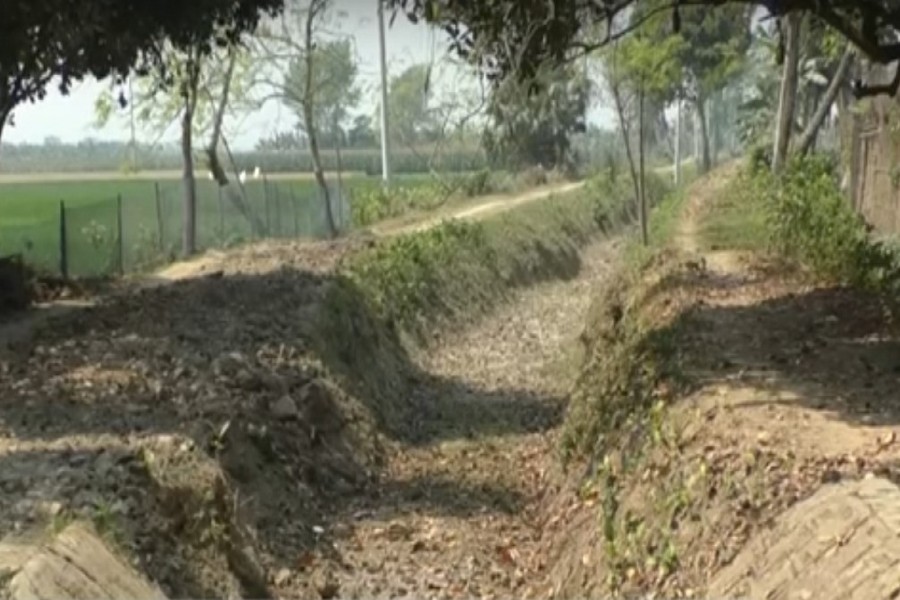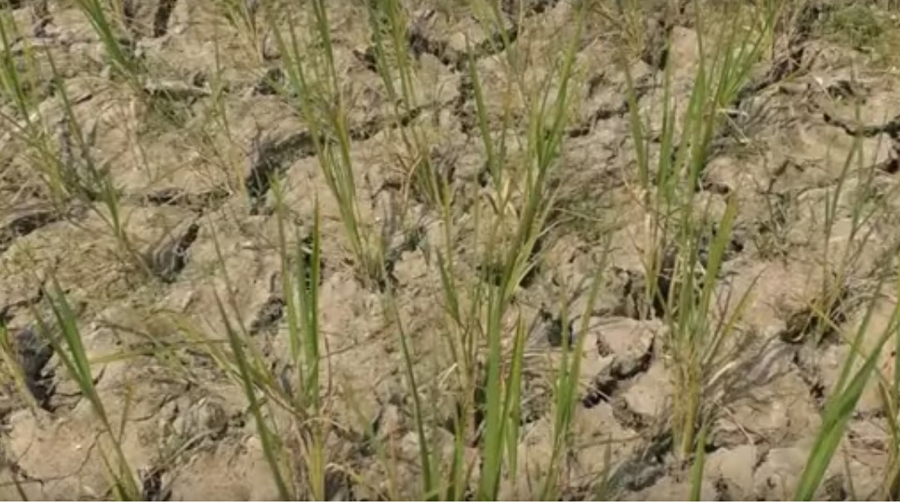
Boro farming in doldrums in southwestern region
Ganges-Kobadak Irrigation Project hits a snag
OUR CORRESPONDENT | Wednesday, 20 March 2024

PABNA, Mar 19: Boro paddy cultivation on 110,107 hectares of land in south-western region is facing trouble due to irrigation-related problem much to the concern of the farmers.
The Ganges-Kobadak (GK) Irrigation Project which serves Kushtia, Chuadanga, Magura and Jhenaidah districts has got into difficulties as operation of all the water pumps under its jurisdiction has remained closed.
Out of the three irrigation pumps, two were shut down long ago while the rest one has been closed recently.
Under the irrigation service of the G-K Project are crop fields of Kushtia Sadar, Kumarkhali, Khoksa, Mirpur, Bheramara, Chuadanga, Alamdanga, Jhenaidah Sadar, Harinakandu, Shailkupa, Magura Sadar, Sreepur and Daulatpur upazilas of Kushtia, Jhenaidah, Chuadanga and Magura districts of the region.
Water was being supplied to four upazilas with only one pump as two pumps remained inoperative.Even that too was closed about a month ago pushing farmers into trouble as they were ready to plant Boro seedlings.
In the present situation, the Boro cultivators are counting heavy losses.
For want of water, many farmers are unable to plant paddy seedlings while crops of many are left in dry condition. Some are using shallow pumps as an alternative, increasing the cost of paddy production 12 to 15 times.
According to farmers, in case of Boro production, irrigation is inevitably needed for preparation of land and growth of seedlings.
Sometimes the land has to be irrigated twice a day. The farmers had been preparing for cultivation since January, but the water supply suddenly stopped after it started.
Water is drawn from the Padma River through the G-K project pumps and distributed through gravity canals. The scheme was undertaken aiming to increase food production, improve cropping patterns, boost cropping intensity and elevate socio-economic status of the farmers. Cultivation of local varieties of paddy started under this irrigation scheme in 1962-63. Planting of improved varieties of paddy was gradually introduced.
Officials at the Department of Agriculture Extension said that farmers are fearing heavy loss for planting Boro paddy on 110,107 hectares of land due to shutdown of the pumps.
Officials of the local Water Development Board office expressed inability to say exactly when water supply for irrigation will begin.
Mizanur Rahman, executive engineer of the G-K pump house in Bheramara, told The Financial Express, "All the three pumps are non-operational. Farmers have been told to manage their own irrigation."
Farmer Mukhleshur Rahman Laddu of Adarsh Andulia village in Harinakundu upazila of Jhenaidah district told FE that farmers have to spend Tk6,000 to 7,000 on diesel and machine rent due to lack of water in the canals.
Officials of the G-K Project said that under this irrigation scheme, water is supplied through 193 kilometres area of the main canals, 467 km of the secondary canals and 995 kms of the tertiary canals in 13 upazilas of Kushtia, Chuadanga, Jhenaidah and Magura.
But irrigation of 110,107 hectares of land under the scheme is facing uncertainty due to the shutdown of pumps. Farmer Sheikh Raju of Baittal in Kushtia sadar upazila has been cultivating paddy for 15 years.
He also prepared for paddy cultivation on one and a half bighas of land this year. However, due to lack of water, he could not plant crops till now.
Another farmer Abdullah, in the same area, also spoke of his plight. He said that he has planted paddy on two bighas of land, but he is not getting water. He had to spend huge sum of money for irrigation through deep tube-wells.
Badrul Alam, a farmer of Dawki village in Alamdanga, planted paddy on 6 bighas of land depending on canal water.
All paddy fields are drying up due to lack of water.
Rajab Ali, a farmer of Haushpur village in Alamdanga upazila, has been irrigating his land using canal water for several generations.

A paddy field in Adarsha Andalia area of Horinakunda upazila of Jhenidah district has dried up due to lack of water — FE Photo
This time he planted paddy on one bigha of land. But he is not getting water. He has been forced to hire shallow engine to irrigate the land.
Executive Engineer of Bheramara Pump House Mizanur Rahman said, "The local engineers could not repair the pumps. A Japanese company installed these pumps. The company has been contacted. But the problem is that these pumps are very old. At one time they were repaired by local engineers but now repair is no longer possible. So, we can't say when the pumps will be operational again."
Besides, several hundred houses built for workers of the G-K Project have been lying abandoned for long. Many of them have turned into safe havens for anti-social elements.
Thieves and vagabonds have taken away valuables including bricks from these houses.
Some local influential people are also trying to occupy the houses under the nose of the authorities. Some of the structures have started to decay for lack of maintenance and repair.
According to Water Development Board sources, the then government of Pakistan started the project in 1954 to ensure irrigation of 197, 000 hectares of arable land in Kushtia, Jhenaidah, Chuadanga and Magura districts.
The project was initiated to improve the overall drainage system of the area with a 971 km long drainage canal. A 228 km long road, 39 km embankment and numerous bridges and culverts were constructed to keep the area flood free. According to project sources, after the launch of the G-K Project in 1963, crop production increased as it solved the water crisis in the area.
Padma River is the main source of water for the G-K Project. Once 13 upazilas, farmers used to plant paddy happily due to abundant water. But since the water agreement, the amount of cultivation has shrunk due to lack of sufficient water in all regions.
motiarfe@gmail.com